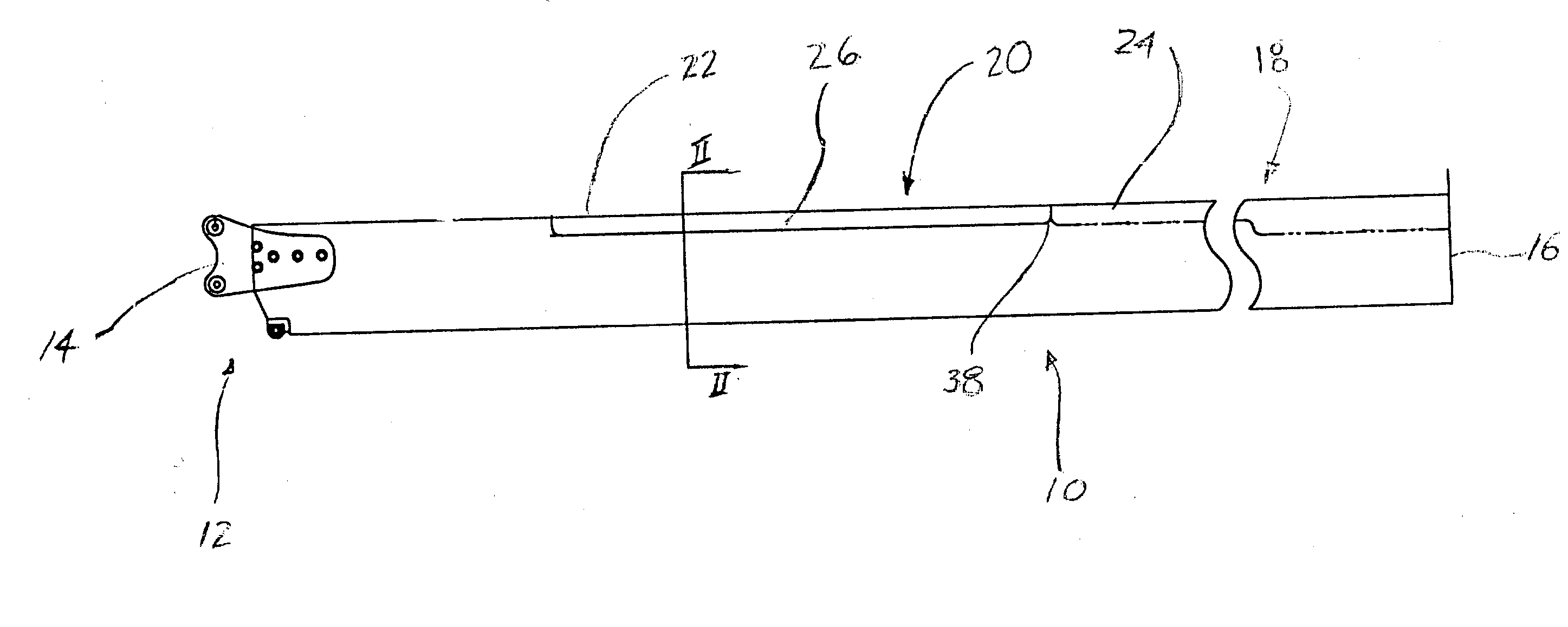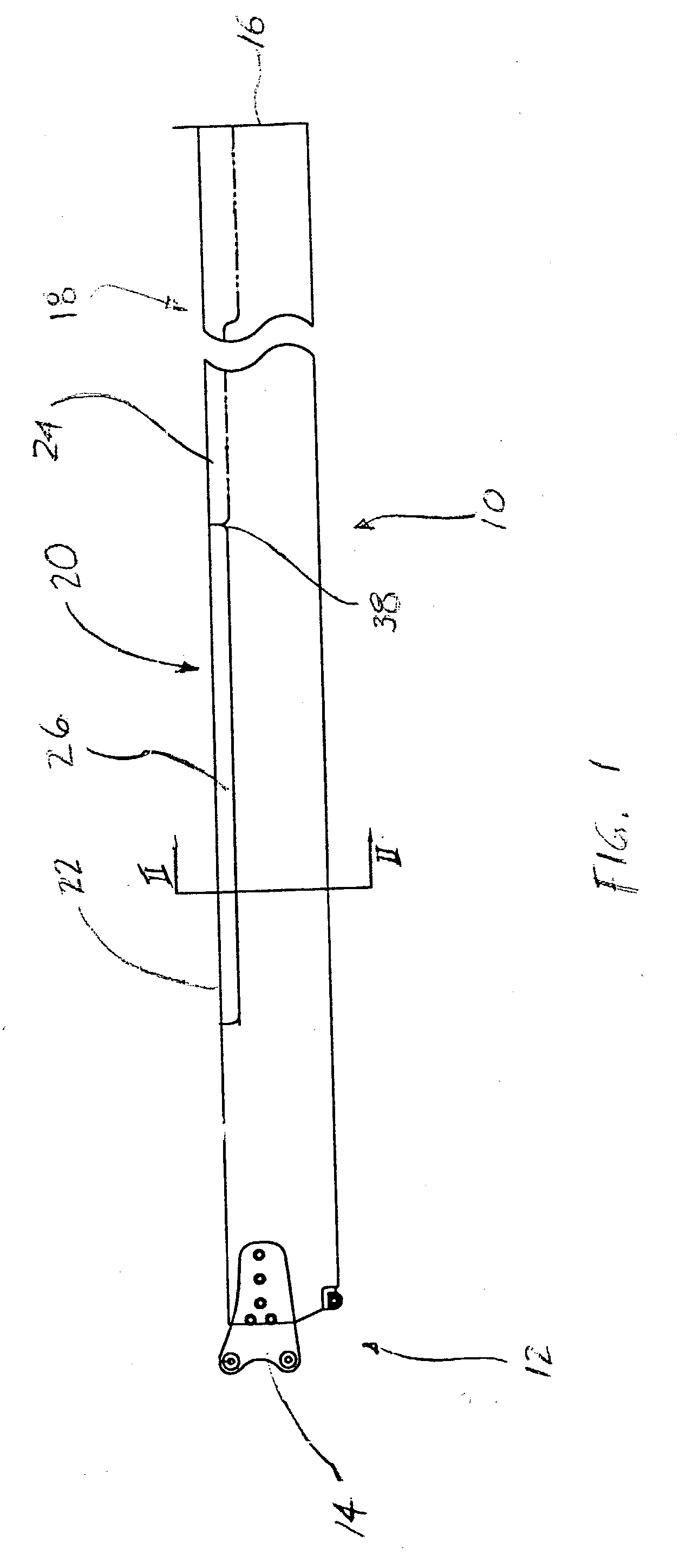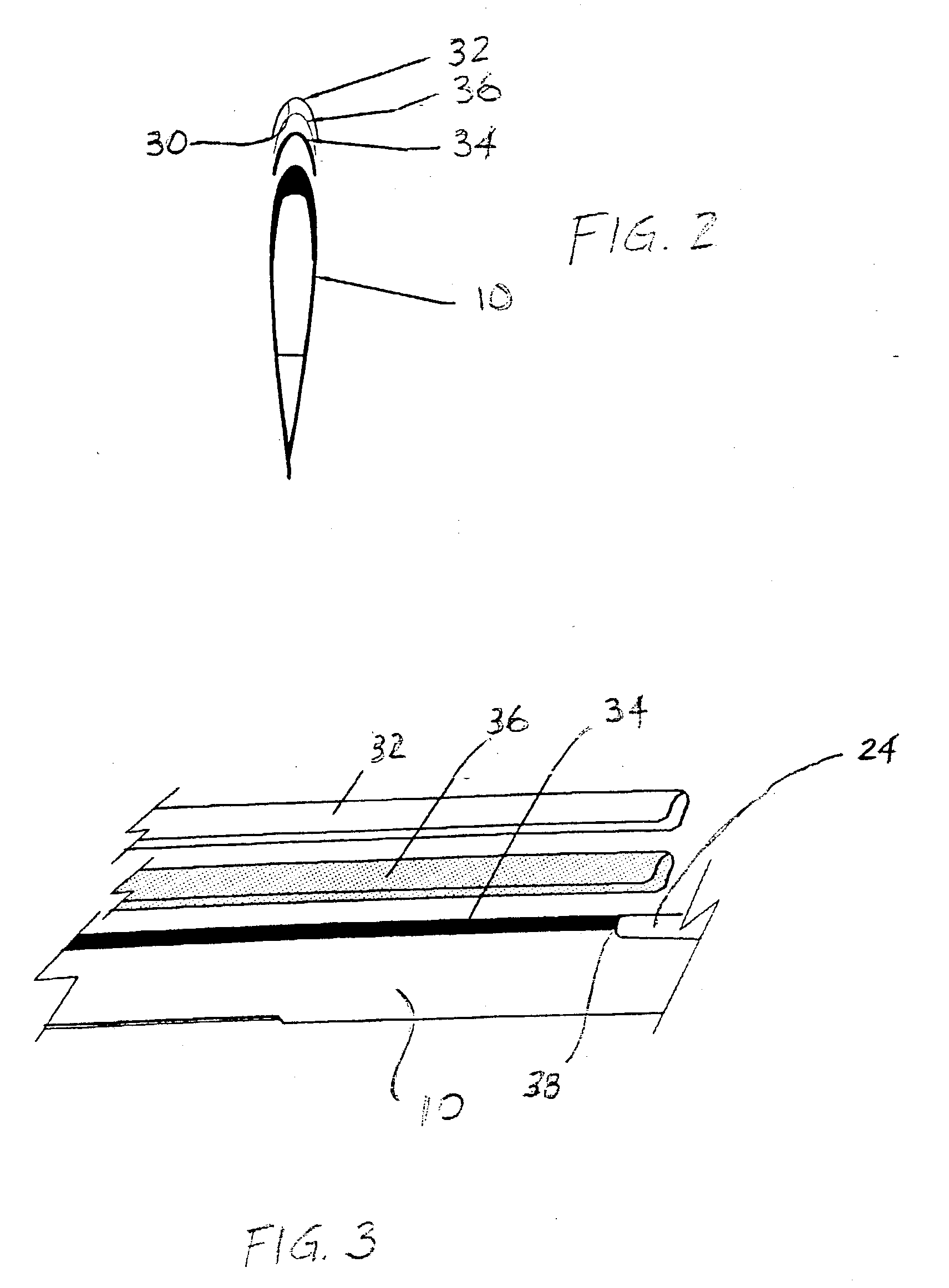Helicopter rotor and method of repairing same
- Summary
- Abstract
- Description
- Claims
- Application Information
AI Technical Summary
Benefits of technology
Problems solved by technology
Method used
Image
Examples
example
[0022] With the illustrated blade 10, the repair area of the blade is marked off. It is then abraded and cleaned with an appropriate solvent.
[0023] The bonding surface 30 of a polyurethane strip 32 is also abraded and cleaned with a solvent.
[0024] Adhesive 34 is applied to the abraded bonding surfaces of the blade and the polyurethane strip.
[0025] A scrim cloth 36, in this case 0.008 inch (00.2 mm.)nylon is positioned smoothly over the repair area, leaving no wrinkles or creases.
[0026] The polyurethane strip 32 is then positioned on the repair area over the scrim cloth and subjected to a uniform pressure of 15 psi (10.sup.5 N / m.sup.2) and an elevated temperature (e.g. 180.degree. F. (82.degree. C.) for a duration sufficient to cure the adhesive. It has been found that good conformity to the original shape of the blade and uniform adhesion are achieved through the use of a pressurized bladder acting on the outer surface of the polymeric sheet during curing of the adhesive.
[0027] This...
PUM
 Login to View More
Login to View More Abstract
Description
Claims
Application Information
 Login to View More
Login to View More - R&D
- Intellectual Property
- Life Sciences
- Materials
- Tech Scout
- Unparalleled Data Quality
- Higher Quality Content
- 60% Fewer Hallucinations
Browse by: Latest US Patents, China's latest patents, Technical Efficacy Thesaurus, Application Domain, Technology Topic, Popular Technical Reports.
© 2025 PatSnap. All rights reserved.Legal|Privacy policy|Modern Slavery Act Transparency Statement|Sitemap|About US| Contact US: help@patsnap.com



